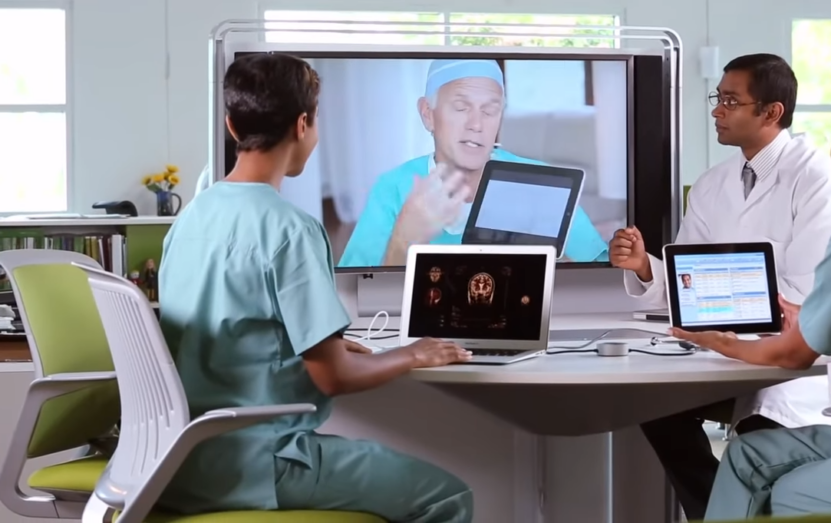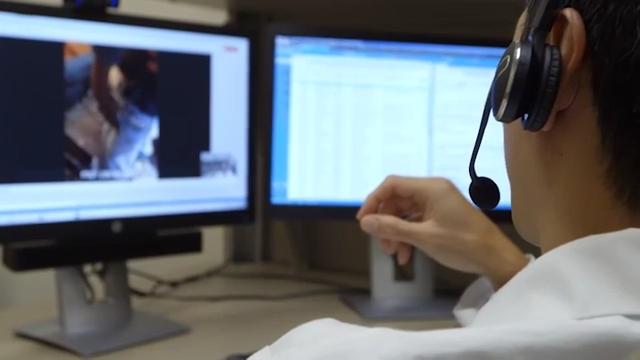Telemedicine has revolutionized the healthcare industry, providing accessibility and convenience to both patients and healthcare providers. With the advent of technology, starting a telemedicine practice has become a viable option for many medical professionals.
It is a rapidly growing field that offers numerous benefits, including increased accessibility to healthcare services, cost savings, and the convenience of receiving care from the comfort of one’s home.
Telemedicine leverages technology to deliver healthcare services remotely. It encompasses a range of services such as video consultations, remote patient monitoring, and electronic prescribing. This mode of healthcare delivery is particularly beneficial for patients in remote or underserved areas, as well as for those with mobility issues.
Before you even consider starting a practice in this field, you should check out more about the benefits and main reasons why it has a huge potential.
| Telemedicine Practice | Description | Benefits |
|---|---|---|
| Virtual Consultations | Patients interact with healthcare providers in real-time via video, audio, or text communication. |
|
| Remote Patient Monitoring | Healthcare providers monitor patients’ health data remotely using digital technology. |
|
| Mobile Health (mHealth) | Patients use mobile devices and apps to access health information and services. |
|
| Store-and-Forward Telemedicine | Patients’ health information is collected and transmitted to healthcare providers for assessment. |
|
| Telepsychiatry | Providing psychiatric assessment and care through telemedicine. |
|
| Teledermatology | Dermatological care and consultation provided through digital images and telecommunication. |
|
| Tele-rehabilitation | Delivery of rehabilitation services over telecommunication networks. |
|
| E-Consultations | Asynchronous communication between primary care providers and specialists for advice and consultation. |
|
| Telepharmacy | Providing pharmaceutical care and services through telecommunication. |
|
| Tele-education for Healthcare Professionals | Providing education and training for healthcare professionals through digital platforms. |
|
Start With a Clear Plan

Starting a telemedicine practice requires careful planning and consideration of various factors. From understanding your target audience to choosing the right technology, each step plays a crucial role in the success of your practice.
Identify Your Target Audience
Consider the demographics, location, and healthcare needs of the patients you aim to serve. This will help you tailor your services and marketing efforts to meet the specific needs of your audience.
Choose the Right Technology
The backbone of any telemedicine practice is its technology. Choose a reliable and user-friendly telemedicine platform that ensures secure and seamless communication between you and your patients. Ensure that the platform complies with healthcare regulations and standards to protect patient privacy and data security.
Setting Up

Once you have a clear plan in place, the next step is to set up your telemedicine practice. This involves creating a virtual space, ensuring legal compliance, and establishing a workflow that suits your practice.
Create a Virtual Clinic
Your virtual clinic is where you will interact with patients. Set up a professional and welcoming virtual space that reflects the values and ethos of your practice. Ensure that the technology you use provides a high-quality video and audio experience to facilitate effective communication.
Ensure Legal Compliance
Telemedicine is subject to various legal and regulatory requirements. Ensure that your practice complies with healthcare laws, licensing requirements, and privacy regulations. Obtain the necessary certifications and licenses, and implement strict security measures to protect patient data.
Marketing is a Powerful Tool

A successful telemedicine practice requires effective marketing to attract and retain patients. Utilize various marketing channels and strategies to promote your services and build a strong online presence.
Build an Online Presence
In today’s digital age, having a strong online presence is crucial. Create a professional website that showcases your services, qualifications, and values. Utilize social media platforms to connect with potential patients and share valuable health-related content.
Engage with Your Community
Engage with your local community and potential patients through health fairs, webinars, and community events. Establish yourself as a trusted healthcare provider and educate the public about the benefits of telemedicine.
Ensure High-Quality Care

Providing quality care is at the heart of any healthcare practice. In telemedicine, ensuring patient satisfaction and delivering effective care requires additional considerations.
Get Closer with Patients
Building a strong rapport with patients is key to a successful telemedicine practice. Take the time to establish a connection and create a comfortable and trusting environment. Be attentive, listen actively, and show empathy to ensure a positive patient experience.
Establish a Continual Care Process
Ensure continuity of care by maintaining thorough and accurate patient records. Utilize electronic health records (EHR) systems to keep track of patient interactions, treatment plans, and progress. This not only enhances patient care but also streamlines the workflow of your practice.
Are There Any Challenges?

Like any healthcare practice, telemedicine comes with its own set of challenges. From technical issues to building patient trust, being prepared and proactive is key to overcoming these challenges.
Deal With Technical Issues on Time
Technical issues are inevitable in telemedicine. Have a backup plan in place and provide clear instructions to patients on what to do in case of technical difficulties. Ensure that your staff is trained to handle common technical issues and provide prompt assistance.
Build Trust and Credibility
Building trust and credibility takes time, especially in a virtual setting. Be transparent, maintain professionalism, and provide high-quality care to establish yourself as a credible and trustworthy healthcare provider.
Integration of New Technologies

In the realm of telemedicine, technology plays a pivotal role in ensuring that healthcare services are delivered efficiently and effectively. Embracing the right technology can make or break your telemedicine practice, making it crucial to stay in touch with the latest advancements and integrate them into your practice.
Choose the Right Software and Tools
Choosing the right software and tools is essential for the smooth operation of your telemedicine practice. Look for platforms that offer a secure and user-friendly interface, reliable connectivity, and compatibility with various devices. Additionally, ensure that the software complies with healthcare regulations and standards to maintain patient privacy and data security.
Integrate with Existing Systems
For a seamless workflow, integrate your telemedicine platform with existing systems such as Electronic Health Records (EHR), billing, and scheduling systems. This integration not only streamlines operations but also ensures that patient information is easily accessible and up to date, enhancing the overall quality of care.
Focus on Patients and Their Satisfaction

The success of your telemedicine practice is heavily reliant on patient engagement and satisfaction. It is vital to create a patient-centric experience that meets the needs and expectations of your patients, fostering trust and loyalty.
Provide a User-Friendly Experience
Ensure that your telemedicine platform is easy to navigate and accessible to patients of all ages and technological proficiency. Provide clear instructions and support for patients to set up and use the platform, and conduct regular checks to ensure that the system is functioning optimally.
Pay Attention to Feedbacks
Actively seek feedback from your patients regarding their telemedicine experience and be open to making improvements based on their suggestions. Regularly assess and update your practices and technology to enhance patient satisfaction and stay competitive in the evolving telemedicine landscape.
Focusing on real examples is the best way to understand the full potential of this healthcare model. Sanjay Upadhyay from Temple University states that there are serious advantages for certain types of patients. Here is what he says about improved care for patients:
- Without patients in the waiting room, I can call and leave a message if they’re not available; I have spoken with them hours later when we can connect.
- I’ve been able to reach patients at their convenience, while they’re in town or traveling.
- Medicare annual well visits can be done via phone and is a very appropriate type of visit to encourage patients to do over the phone.
How to Secure Financial Stability?

Starting and running a telemedicine practice requires significant financial investment. Ensuring the financial sustainability of your practice is crucial for its long-term success.
Diversify Revenue Streams
Explore various revenue streams such as patient fees, insurance reimbursements, and partnerships with other healthcare providers or organizations. Stay informed about telemedicine reimbursement policies and work with billing specialists to optimize revenue collection.
Secure Efficient Cost-Management
Keep a close eye on the operational costs of your telemedicine practice, including technology, staffing, and marketing expenses. Implement cost-effective strategies and leverage technology to streamline operations and reduce overhead costs.
Follow Regulations and Avoid Risks

Telemedicine practices are subject to various legal and regulatory requirements. Staying compliant and mitigating risks is paramount to protect your practice and ensure the safety and privacy of your patients.
Always Keep Up With Regulations
Stay informed about the legal and regulatory requirements pertaining to telemedicine in your jurisdiction. Ensure that your practice adheres to these regulations, including licensure, patient consent, and data security standards.
Implement Proper Security Measures
Implement robust security measures to protect patient data and maintain the integrity of your telemedicine platform. Conduct regular security audits and provide training to your staff on best practices for data security and privacy.
| Regulation Category | Description | Common Requirements or Considerations |
|---|---|---|
| Licensing and Credentialing | Healthcare providers must be licensed in the state where the patient is located during the telemedicine session. | – Providers may need to obtain multiple state licenses. – Some states participate in licensure compacts. |
| Privacy and Security | Telemedicine interactions and patient data must be protected to ensure confidentiality and security. | – Must comply with HIPAA in the U.S. or equivalent privacy laws in other countries. – Use secure, encrypted communication platforms. |
| Reimbursement Policies | Providers must adhere to specific billing and reimbursement policies for telemedicine services. | – Varies by insurance company and state. – Some regions have parity laws requiring equal reimbursement for in-person and telehealth services. |
FAQs

What is another word for telemedicine?
Telemedicine is also commonly referred to as telehealth. Both terms are often used interchangeably, although telehealth can sometimes encompass a broader range of remote healthcare services, including non-clinical services.
What is a telemedicine software?
Telemedicine software is a digital tool or platform designed to facilitate remote healthcare services. It enables secure communication between patients and healthcare providers through video calls, messaging, and other online tools, allowing for consultations, diagnosis, and treatment planning from a distance.
What systems are used for telehealth?
Telehealth utilizes a variety of systems to deliver remote healthcare services, including:
- Video conferencing platforms for virtual consultations.
- Electronic Health Records (EHR) systems to store and manage patient information.
- Secure messaging apps for communication between patients and healthcare providers.
- Remote patient monitoring tools to track patients’ vital signs and health status from home.
What is the most used telehealth platform?
The popularity of telehealth platforms can vary by region and specific healthcare needs. However, platforms like Teladoc, Amwell, and MDLive are widely recognized and commonly used for a variety of telehealth services.
What is the biggest disadvantage to telehealth?
One of the biggest disadvantages to telehealth is the potential for limited physical examination, which can be crucial for accurate diagnosis and treatment planning. The lack of in-person interaction may also impact the healthcare provider’s ability to build rapport and fully understand the patient’s condition.
Which two clinical specialties are most fitting for telehealth?
Psychiatry and dermatology are two clinical specialties that are particularly well-suited for telehealth. Psychiatry can often be conducted through conversations and assessments that translate well to virtual platforms, while dermatology can utilize high-resolution images and video for skin evaluations.
Summary

The future of telemedicine is bright, with advancements in technology and increasing acceptance among patients and healthcare providers. Stay informed about emerging trends and innovations in telemedicine, and be ready to adapt and evolve your practice to meet the changing needs of healthcare delivery.
